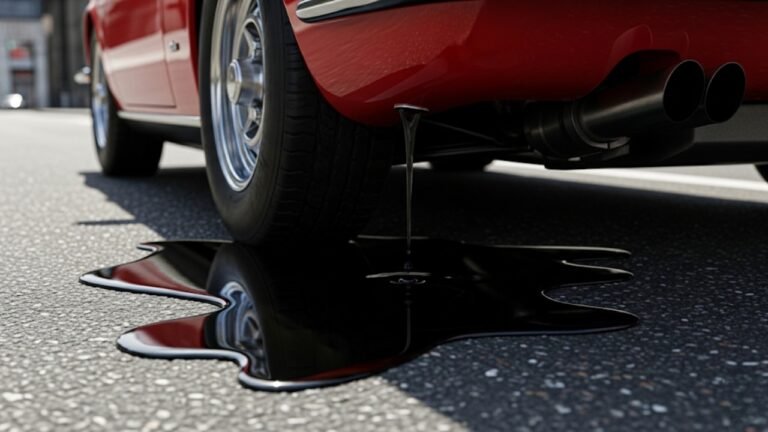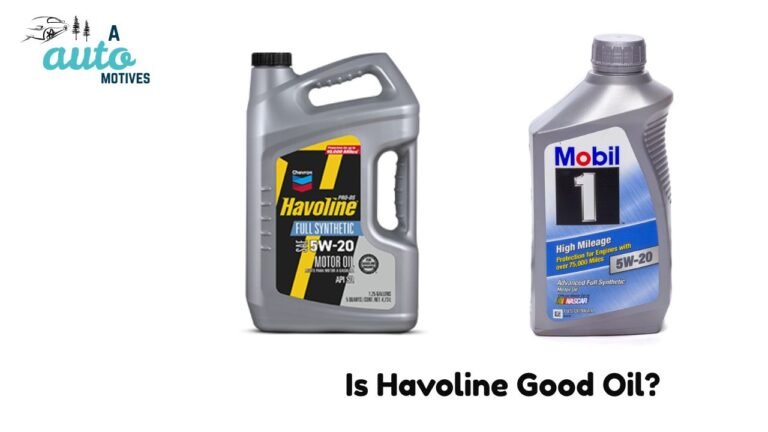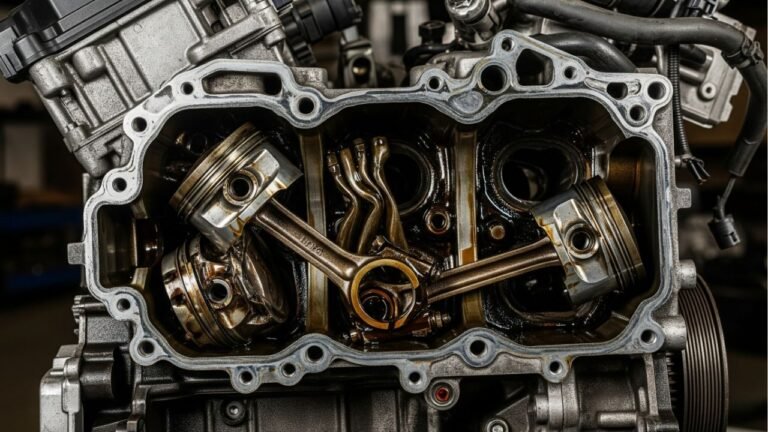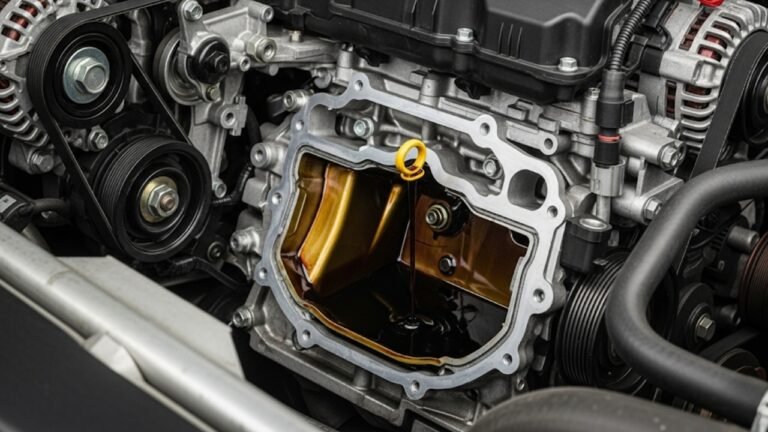What Do You Need to Change Oil in Your Car?

We’ve all been there. That little orange light blinks on, reminding us it’s time again. Changing the oil in your car isn’t just a routine task—it’s an act of care, like making a home-cooked meal for your oldest friend. Whether you’re a weekend warrior, a curious beginner, or someone who just wants to save a few bucks, learning what you need to change oil in your car gives you control, satisfaction, and maybe even a little pride.
I remember the first time I changed mine. I was nervous. I thought I’d mess it up, ruin my engine, or drown in motor oil. Spoiler: I didn’t. And you won’t either. The secret is knowing what tools and steps you need—and trusting yourself a bit more. Let’s walk through it together.
Why Changing Your Oil Matters More Than You Think

Fresh oil keeps your engine efficient. It reduces wear and helps prevent overheating. Old, dirty oil? It clogs things up like bad cholesterol in an artery. And when that happens, parts break down faster. Not to mention, skipping oil changes can void warranties or lead to expensive repairs.
I once put off an oil change for months during a busy year. It was a mistake. The car started making weird noises and ran rough. When I finally got around to changing it, the oil was thick like syrup. I knew then—this isn’t a luxury; it’s maintenance 101.
What Do You Need to Change Oil in Your Car?
Let’s get down to brass tacks. To do this right, you’ll need a few essentials. Nothing too fancy—but each tool matters. Here’s a quick look before we dive into the details:
Basic Tools and Materials
-
Motor Oil (check your car’s manual for the right type and quantity)
-
Oil Filter
-
Wrench (usually a socket wrench or filter wrench)
-
Oil Drain Pan
-
Oil Funnel
-
Car Jack and Jack Stands (or ramps)
-
Gloves and Rags
-
Oil Filter Wrench (depending on your filter type)
-
Owner’s Manual (always helpful)
Changing oil is like cooking a recipe. The ingredients are simple, but the timing and technique matter. Let’s break each item down and talk about why it matters.
Picking the Right Motor Oil: Not All Oils Are Equal
The heart of this whole operation is motor oil. It’s tempting to grab the cheapest bottle on the shelf—but don’t. This is like picking fuel for your body. Your car needs a specific type of oil to run well, and it’s usually printed in your owner’s manual.
You’ll see codes like 5W-30 or 10W-40. They’re not gibberish. These numbers represent oil viscosity—how thick or thin it flows at different temperatures. For most people, 5W-30 works great year-round. But if you drive in extreme heat or cold, the right oil type matters even more.
There are also three types of oil:
-
Conventional Oil – Cheaper, basic, works fine for older engines.
-
Synthetic Oil – More expensive, but it lasts longer and performs better.
-
Synthetic Blend – A mix of both, giving you balance.
When I switched to full synthetic oil, I noticed my car ran smoother. Maybe it’s all in my head. Or maybe it’s the engine sighing in relief. Either way, it was worth it.
Choosing the Right Oil Filter: Small but Mighty
If oil is the blood, the oil filter is the kidney. It removes dirt, metal shavings, and other junk that builds up over time. Skipping a filter change is like taking a shower but putting on the same dirty socks. Why bother?
Most auto parts stores will help you find the right filter. Just tell them your car’s make, model, and year. Or use an online lookup. And trust me—don’t cheap out here. A low-quality filter can break down fast or fail to trap debris properly.
There are a few types to know:
-
Spin-on Filters – These are the most common and look like a small metal can.
-
Cartridge Filters – Used in newer or European cars. They sit inside a housing and need a bit more finesse.
The first time I changed a cartridge filter, I was sweating bullets. But once you do it, it’s no big deal. Just make sure to lubricate the rubber gasket with a little new oil before installing. This helps seal it tight without sticking later.
You’ll Need an Oil Drain Pan: Save Your Driveway
Changing your oil without a drain pan is like cooking without a pan. Things are going to get messy fast. These pans are designed to catch and hold old oil when you unscrew the drain plug underneath your car.
Look for one with:
-
A wide opening
-
A good pouring spout
-
A handle (makes it easier to carry)
Bonus tip: Place a cardboard sheet or an old towel under the pan. Even with a steady hand, oil loves to splatter. The first time I did mine, I missed the pan slightly and got oil all over the driveway. Lesson learned.
Also, remember to dispose of used oil properly. Most auto stores will take it back for recycling. Never dump it down a drain. It’s illegal—and it’s toxic for the planet.
The Right Wrench Makes All the Difference
You’re going to need two kinds of wrenches:
-
Socket Wrench for the drain plug
-
Oil Filter Wrench for the filter (if it’s too tight)
If the drain bolt is on tight (and it usually is), a socket wrench gives you good leverage. Just be careful not to overtighten when putting it back in. I once cranked mine too hard and stripped the threads. That was an expensive mistake.
Oil filter wrenches come in several shapes—strap-style, cup-style, and claw-style. Some filters twist off by hand, but others feel welded in place. If it’s your first time, pick up an adjustable one. It’ll work on most filters and save you from frustration.
Jack Stands or Ramps: Safety First
Let’s be clear: Never work under a car supported only by a jack. It’s not worth the risk. Use jack stands or ramps to lift your car safely. Your life literally depends on this.
I personally prefer ramps. They’re faster and feel more stable. Just drive your car up slowly and make sure it’s centered. Chock the rear wheels with bricks or wheel stops so nothing rolls. And always work on level ground.
Once, I helped a buddy change oil in his sloped driveway. Big mistake. We spent more time stabilizing the car than actually changing the oil. Now I always pick a flat spot—ideally with shade!
Funnels, Gloves, and Rags: Little Things, Big Help
Don’t skip these! A funnel saves you from spilling new oil all over your engine bay. It’s also easier to pour when your hands aren’t shaking. Choose one with a long neck and wide mouth.
Gloves keep your hands clean and protect you from hot oil. And trust me—hot oil hurts. Even if the engine’s been off for a while, it can retain heat. Wait at least 30 minutes after running it.
Rags or paper towels are your cleanup crew. You’ll need them for wiping dipsticks, cleaning spills, and patting yourself on the back when you’re done.
I keep a little box in my garage with all these things. Makes it easy to do quick oil checks too. Once you have the basics, you’re ready to go anytime.
Owner’s Manual: Your Secret Weapon
If you’re ever unsure about something, grab your owner’s manual. It tells you:
-
What kind of oil to use
-
How much oil your engine takes
-
Where the filter and drain plug are located
-
Maintenance intervals
Even after years of doing my own oil changes, I still double-check the manual. Every car’s a little different. The manual is like a GPS for your car’s guts.
Quick Comparison Table: Tools You Need
| Tool / Item | Why You Need It | Pro Tip |
|---|---|---|
| Motor Oil | Lubricates engine, prevents wear | Use synthetic for better performance |
| Oil Filter | Removes dirt and metal particles | Replace every oil change |
| Drain Pan | Catches old oil | Choose one with a good spout |
| Socket Wrench | Removes drain bolt | Get the right size for your car |
| Filter Wrench | Helps loosen tight filters | Adjustable ones work on most cars |
| Funnel | Prevents spills when pouring new oil | Long-necked ones work best |
| Gloves/Rags | Keeps you clean and safe | Nitrile gloves are oil-resistant |
| Jack Stands/Ramps | Safely lift and support car | Never crawl under just a jack |
| Owner’s Manual | Exact specs for your car | Always double-check oil capacity |
How to Prepare for an Oil Change Without Stress
Before you dive in, take a moment to prepare. Doing an oil change should feel calm, not chaotic. I like to think of it as setting the stage for a performance—you wouldn’t start cooking a big dinner without pulling out the ingredients first, right?
Start by gathering all your tools and supplies in one place. Lay them out so everything is easy to reach. This might sound simple, but it saves you from hunting for a wrench with oil-covered hands later.
Here’s a quick checklist:
-
Is your car parked on a flat surface?
-
Do you have enough new motor oil?
-
Is your drain pan empty and clean?
-
Do you know where the oil filter and drain plug are?
Also, wear old clothes. Trust me, oil doesn’t wash out easily. I once ruined a favorite T-shirt thinking, “I’ll just be quick.” Don’t make the same mistake.
Step-by-Step: How to Change Oil in Your Car
Now, let’s get into the actual process. Here’s how to change your oil from start to finish. Take it slow. Enjoy it. There’s something satisfying about doing this yourself.
1. Warm up your engine (just a little)
Run your engine for about five minutes. This thins the oil so it drains better. But don’t let it get too hot. You should be able to touch the oil pan without getting burned.
2. Lift the car safely
Use your jack and secure with jack stands or drive onto ramps. Always double-check that the car is stable before you go underneath.
3. Place the drain pan under the oil plug
Position it directly under the bolt. Unscrew the plug with a socket wrench, and let the oil drain completely. This might take a few minutes.
4. Remove the oil filter
Use your filter wrench if needed. Be careful—some oil may spill out. Make sure the rubber gasket comes off with the old filter.
5. Install the new oil filter
Apply a little fresh oil to the rubber seal of the new filter. Screw it on by hand. Don’t overtighten—just snug.
6. Replace the drain plug
Once the oil stops dripping, screw the plug back in. Tighten it securely but don’t overdo it. You’re sealing it, not welding it shut.
7. Add new oil
Use a funnel to pour the fresh oil into the engine. Check the owner’s manual for the correct amount.
8. Check oil level and leaks
After waiting a few minutes, start your engine. Let it run for 30 seconds. Turn it off, wait two minutes, then check the dipstick. Add oil if needed.
9. Dispose of old oil properly
Pour it into a sealed container and take it to an auto store or recycling center. Never dump it down a drain or in the yard.
Once you’re done, pat yourself on the back. You just saved money, learned something valuable, and probably bonded with your car a little.
How Often Should You Change Your Oil?
This is one of those debates that people love to have. Some say every 3,000 miles, others claim you can wait 10,000 miles with synthetic oil. The truth is: check your owner’s manual.
As a rule of thumb:
-
Conventional oil: Every 3,000–5,000 miles
-
Synthetic oil: Every 7,500–10,000 miles
-
Severe driving (short trips, towing, dusty areas): Change more often
I drive an older sedan with synthetic oil. I change it around every 6,000–7,000 miles. It keeps things running smoothly, and I’ve never had engine trouble.
Changing your oil regularly also keeps your resale value up. Buyers love maintenance records. It’s like showing you’ve cared for your car, not just used it.
Common Mistakes First-Timers Make (and How to Avoid Them)
We all make mistakes. The key is learning from them. Here are a few I’ve made—or seen others make—and how you can avoid them:
❌ Using the wrong oil
Always double-check the viscosity rating (like 5W-30). Using the wrong type can mess with engine performance.
❌ Overfilling with oil
Too much oil can cause pressure buildup, which might damage seals or gaskets. Check the dipstick carefully.
❌ Forgetting to replace the oil filter
Changing oil but keeping the old filter is like washing your hands but using a dirty towel.
❌ Not tightening the drain plug or filter enough
This leads to leaks. Tighten securely but avoid over-tightening. Trust your hand strength.
❌ Not disposing of oil properly
It’s illegal to dump oil. Store it safely and drop it off at a local parts store or recycling center.
I made almost every mistake on this list at least once. But now I smile when I do an oil change—it feels like a mini ritual, a reminder that I’ve come a long way from where I started.
Why DIY Oil Changes Are Worth It
Yes, you can pay someone else to change your oil. And sometimes that makes sense—like when you’re short on time or have a tricky car. But when you do it yourself, you get more than just clean oil.
You get:
-
Confidence – You’ll understand your car better
-
Savings – DIY changes can cost half as much
-
Satisfaction – There’s pride in doing it yourself
-
Peace of mind – You know it’s done right
For me, it’s also about connection. My dad taught me how to change oil when I got my first car. Now, I’ve passed it on to my nephew. It’s a small thing—but those memories stick.
Final Thoughts: It’s Easier Than You Think
If you’re still wondering what do you need to change oil in your car, let me say this: you already have most of what you need—curiosity, common sense, and courage. The tools are just the bonus.
It’s okay to be nervous the first time. But once you do it, you’ll wonder why you waited so long. You’ll understand your car better. You’ll feel more independent. And you’ll save a little cash each time too.
The next time that oil light comes on, don’t see it as a chore. See it as a chance. A chance to roll up your sleeves, learn something, and take care of the machine that takes care of you.





